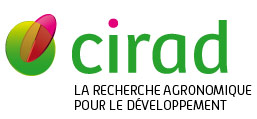Low-intensity logging alters species and functional composition, but does not negatively impact key ecosystem services in a Central African tropical forest
Sullivan M.K., Vleminckx J., Mouguiama Bissiemou P.A., Niangadouma R., Ilambi Mayoungou M., Lemeilleur Temba J., BÃĐnÃĐdet F., Abernethy K.A., Queenborough S.A., Comita L.S.. 2024. Global Ecology and Conservation, 53 : 14 p..
Selective logging can impact tree composition and the long-term sustainability of forests. Studying the ecological consequences of logging practices is crucial for guiding forest management strategies aiming at maintaining ecological integrity and supporting landscape-level conservation goals. We investigated the consequences of very low-intensity selective logging in multiple tree life stages across a logged forest chronosequence in Gabon. We found that species composition differed between logged and unlogged forests at all life stages (seedlings, saplings, and adults), which were most pronounced in the understory of older forests (logged 10 years prior) compared to unlogged areas. However, logging explained a small portion of the variation in species composition (<3% alone, <8% in combination with habitat). For functional composition, we observed higher wood density in the understory of older logged forests than in unlogged forests. Light-demanding saplings and saplings with animal-dispersed seeds were more prevalent in older logged forests than in unlogged forests. Timber species were less prevalent as seedlings and adults but more prevalent as saplings in logged forests compared to unlogged forests. Our results suggest that very low-intensity logging does not negatively impact key ecosystem services like carbon storage and food availability for frugivores. However, reduced prevalence of timber species may impact logging sustainability. Our study indicates that, when considering best-case scenarios, selectively logged forests have the potential to support conservation goals by offering refugia for biodiversity and maintaining essential ecosystem services. Thus, these forests have the potential to complement protected areas and serve as a sustainable alternative to more intensive land use.
Mots-clÃĐs : arbre forestier; exploitation forestiÃĻre; amÃĐnagement forestier; ÃĐcologie forestiÃĻre; biodiversitÃĐ; conservation de la diversitÃĐ biologique; durabilitÃĐ; ÃĐcosystÃĻme; services ÃĐcosystÃĐmiques; ÃĐcosystÃĻme forestier; gabon
Documents associÃĐs
Article (a-revue à facteur d'impact)
